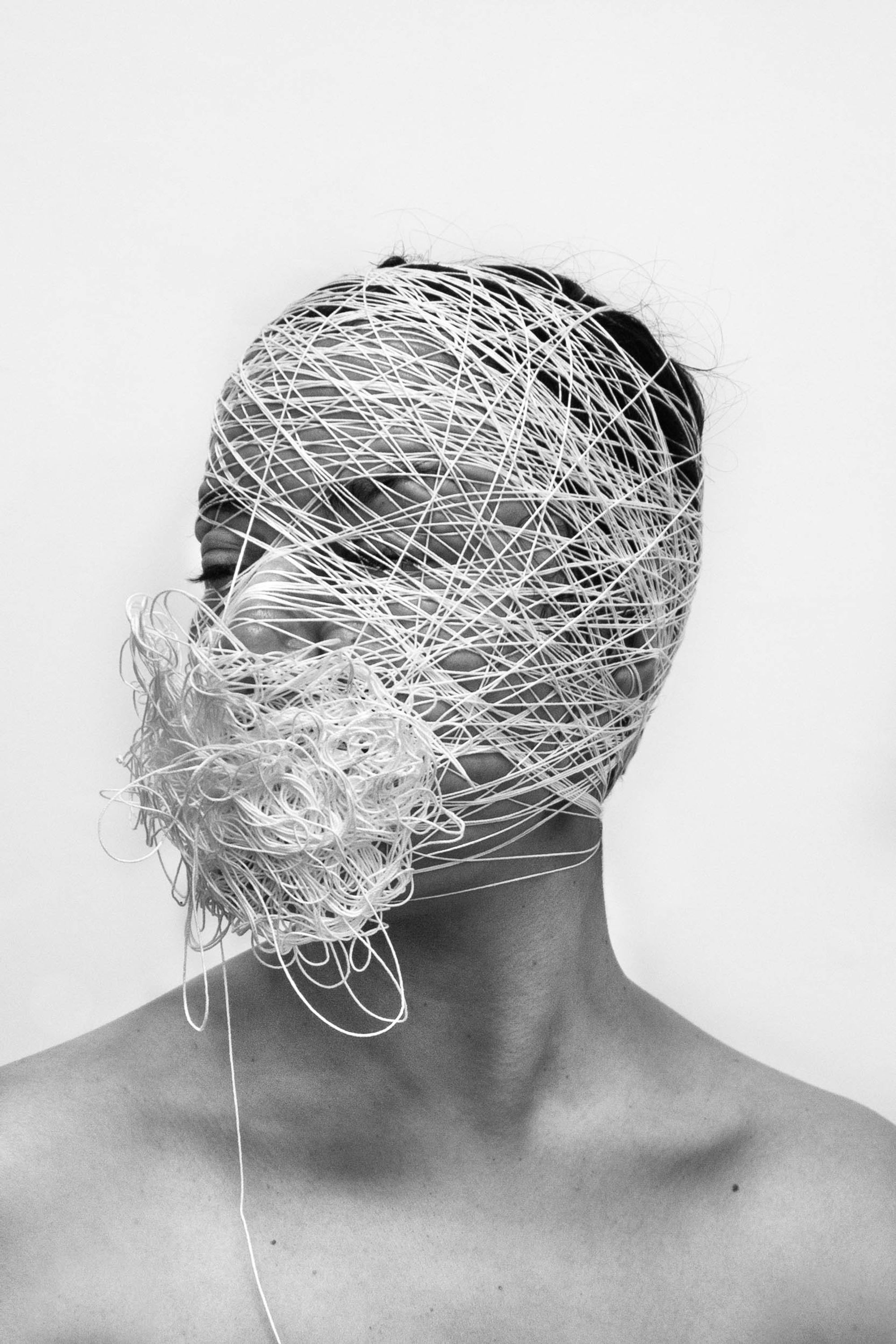UNDER THREADPhoto Series
20199 Artworks
In Islam, it is believed that Prophet Mohammed is escaping from people who are trying to capture him. An angel tells him to find shelter in a cave, where he is concerned of being trapped. The angel insists and he abides. He acknowledges the presence of a spider at the entrance of the cave before he enters it. Upon entering, the spider weaves an intricate web across the entrance of the cave. His enemies catch up to him and are mesmerized by the web and come to the conclusion it would have been impossible for him to be in the cave, otherwise the web would have been broken — alas, the Prophet was protected. Muslims are never to kill a spider as they are considered to be “بركة,” a blessing. Something so small produces something so seemingly fragile and yet incredibly resilient. Eventually his enemies move forth and, in order to leave the cave to migrate onward to Mecca, the Prophet must break the very thing that protected him.
alia ali
March 19th, 2023, marked the seven-year anniversary of the war in Yemen. Throughout this time, the United States of America has positioned itself at the core of what is considered to be today’s worst humanitarian crisis. While being one of the world’s youngest countries, the United States of America is actively participating in the erasure of one of the world’s oldest civilizations, Yemen, and continues to do so, four years on. The war in Yemen has been disregarded by mainstream media as a global problem instead of being a crisis heavily supported by the United States of America and its government-backed companies. What can be done to penetrate and illuminate the circumstances and actions that have contributed to the horrendous acts of violence on Yemeni civilians? And what will make its citizens aware of how enmeshed the government is, and therefore we all are, as a nation? Perhaps it’s not asking what are the causes of the war, but rather who is causing them and, in turn, precisely who is being harmed under the guise of the term “collateral damage”?
Thread, like photography, can be used as both a tool and a weapon. In the series of auto-portraits, UNDER THREAD (2019), thread and photography are combined to address paradoxical notions surrounding conflict and peace, active participation and passive absenteeism, hopefulness and despair, complicity and ignorance, government involvement and individual participation. Thread ad photography can protect us, but also harm us. Very much like our governments: they can protect us, but can also stifle us. This series of photographs is an interrogative body of work, that I approach as a citizen of my native land, Yemen, and of my adopted land, the United States. I interrogate the audience by asking who is responsible for the wars that we, as a nation, participate? Is it the government or its citizens, or neither, is it perhaps the government-backed companies? The US is commonly misunderstood as a democracy wherein citizens are responsible, but it is, in fact, a republic where elected officials decide what is to be done with the capital of their citizens, and in many cases, companies that place those officials in their seats and dictate those decisions.
UNDER THREAD (2019) rips the web of the very thing that is meant to protect us and advertises itself as the protector of others–– the US government that has been created by the erasure of peoples and culture, capitalist values, privately owned news channels, and politicians controlled by lobbyists. This creates an overwhelming web that makes crises, such as Yemen, impenetrable.
Rather than focus on the larger picture that presents itself as an obfuscated web of data, US citizens are distracted by the saturation of information regarding conflicting tribal, national and colonial histories with regard to the conflict in Yemen and the multiple entities that provide weapons and intelligence to the warring factions, Saudi Arabia and Iran, in this proxy war. By naming both the victims and the culprits embroiled in today’s worst humanitarian crisis, this research and body of work presents a less distracted image of “who” while still pursuing the question of “why?”.

